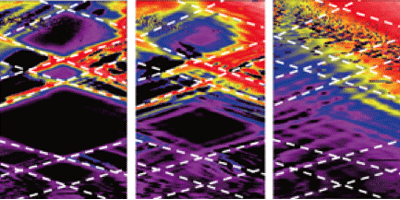Tunneling with the Help of Photons
Quantum dots—small semiconductor islands containing electrons confined to all three dimensions—offer many possibilities as single-electron transistors, logic elements in quantum computers, and light-emitting devices. In these dots, a phenomenon called photon-assisted tunneling can occur in which applied radiation enables electrons to tunnel through the dot. Reporting in Physical Review Letters, Kenji Shibata at the University of Tokyo, Japan, and colleagues demonstrate photon-assisted tunneling in the hard-to-reach and technologically important terahertz part of the spectrum.
Shibata et al. study quantum dots made from indium arsenide, offering an energy-level spacing well matched to terahertz frequencies. The researchers grew quantum dots with molecular-beam epitaxy and placed a single dot between electrodes separated by a nanometer-size gap. They generated the terahertz field by pumping methanol gas with an infrared laser and efficiently coupled it to the dot via an antenna structure and a hemispherical silicon lens. Under terahertz irradiation, enhancement of electron transport through the dot was observed.
Two distinct types of photon-assisted tunneling emerged from the data: electron tunneling from the dot’s ground state into the electrodes, and electron tunneling between the electrodes via the excited state. Shibata et al. also found strong coupling between the terahertz control field and electrons in the quantum dot. Their results offer encouraging signs that the behavior of single carriers could be controlled by light in a challenging frequency range suitable for applications in spintronics and nanoelectronics. – David Voss





